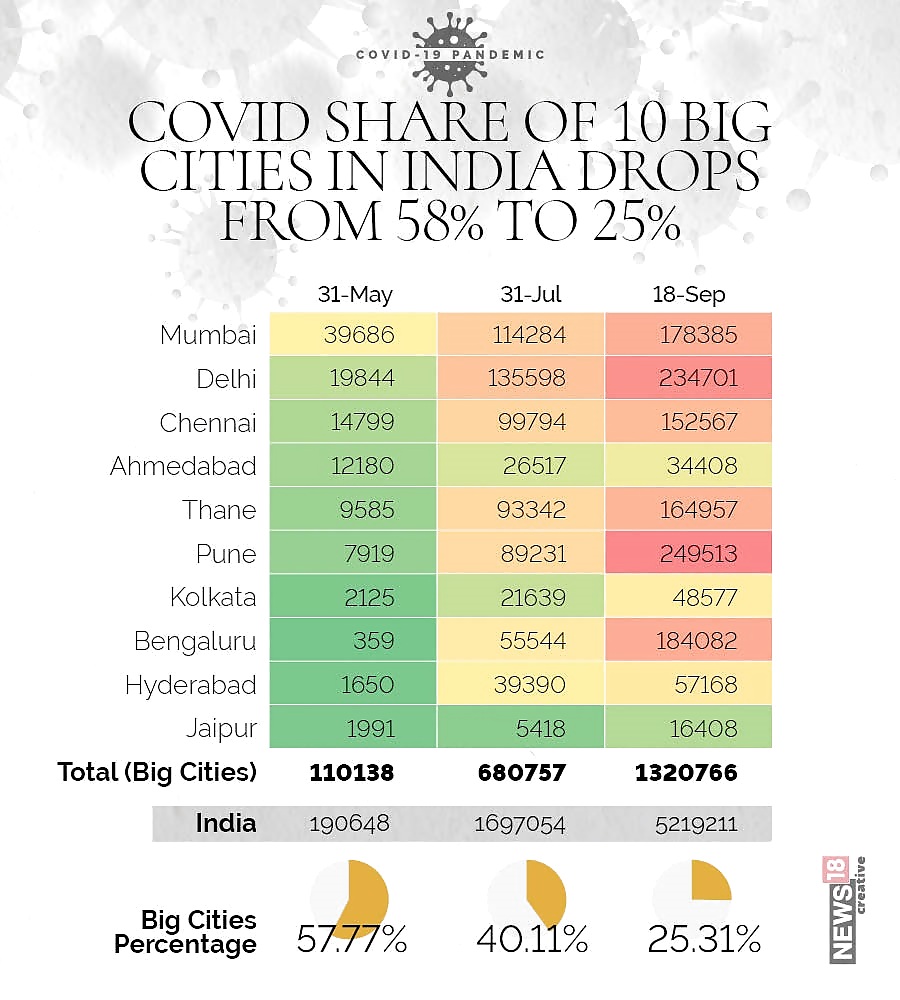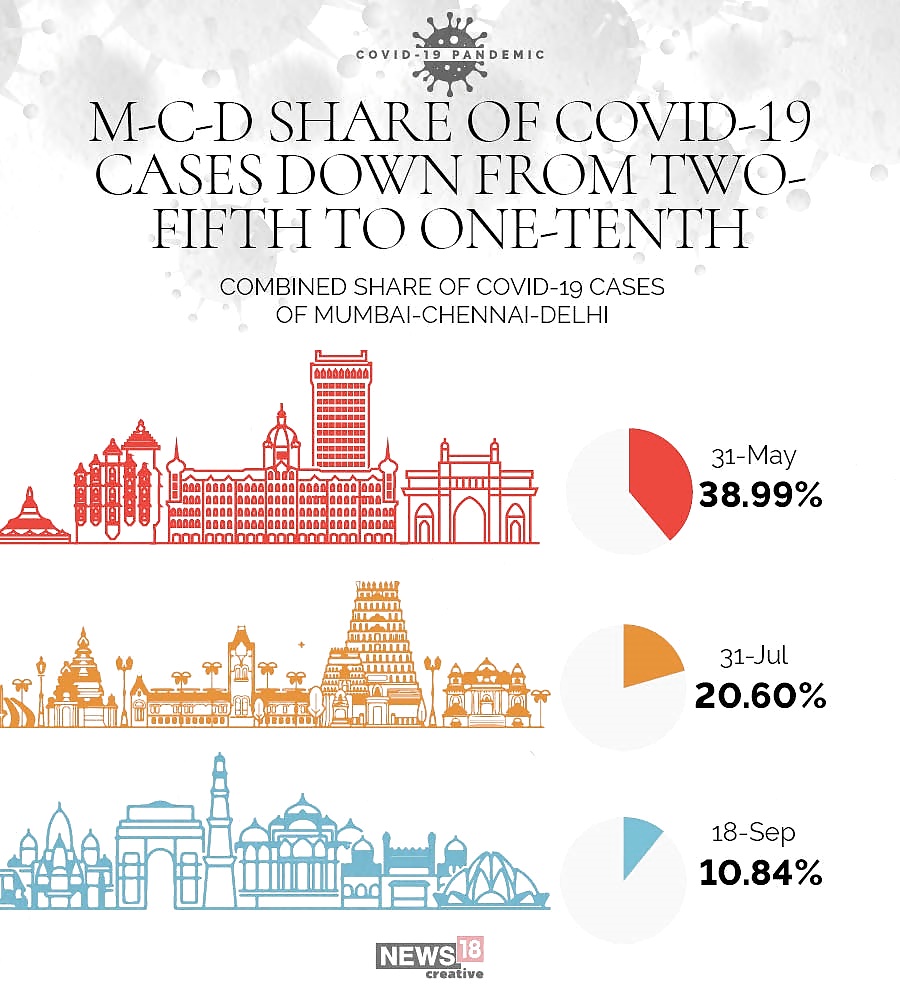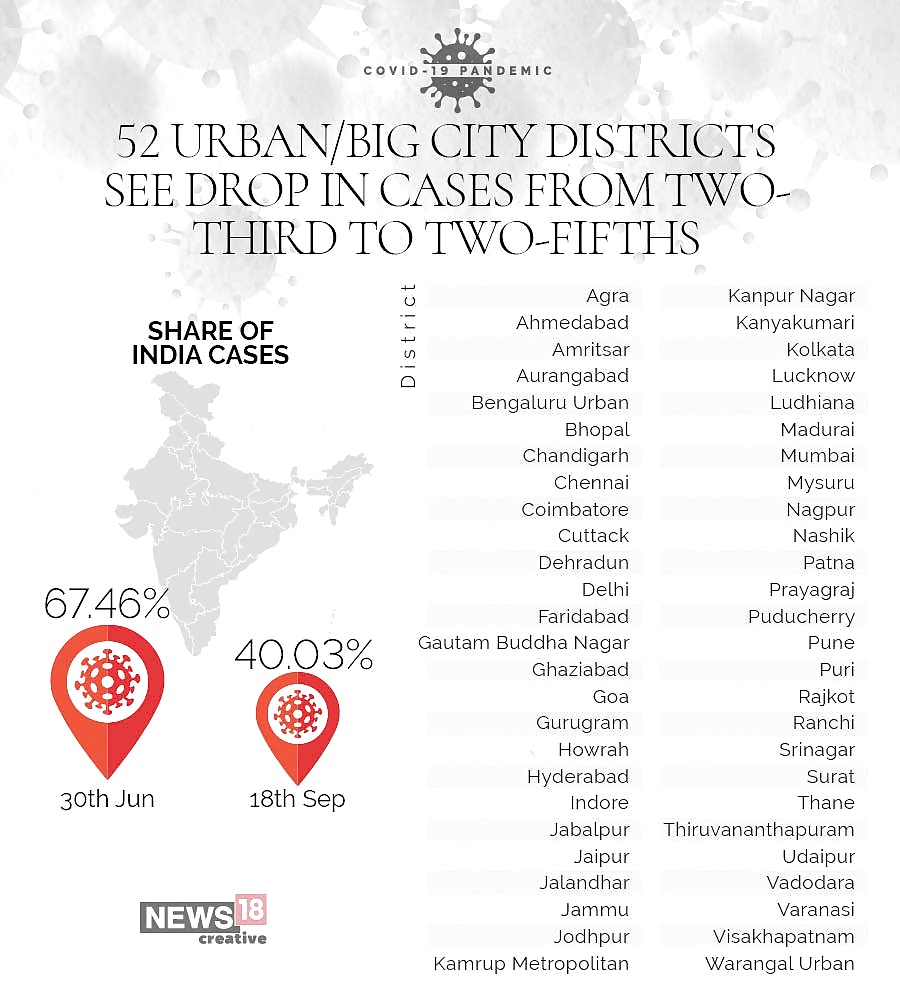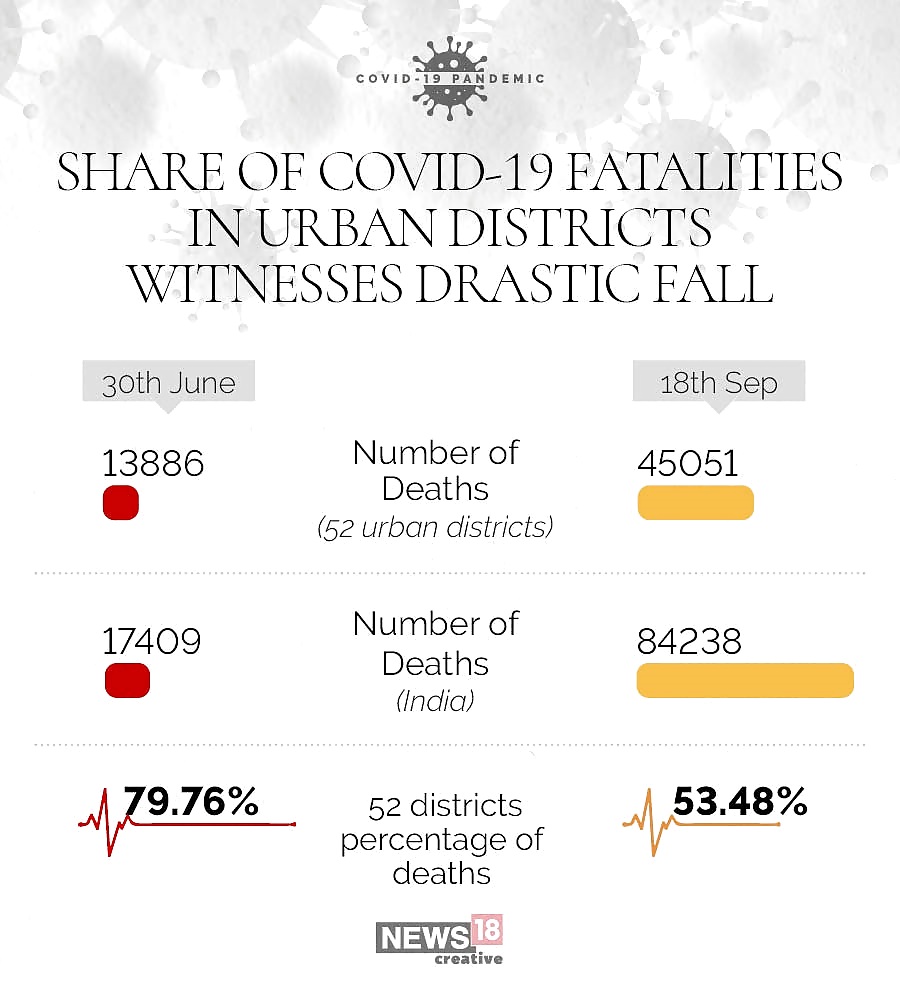
views
One of the major reasons for the comparatively lower Covid-19 Fatality Rate in India is the fact that the Covid-19 pandemic was essentially an urban phenomenon. The metropolitan towns and other big cities and state capitals accounted for most of the cases in the country while a very minuscule percentage was attributed to the rural and semi-rural districts. However, in a worrying trend, this appears to be changing for India.

The 10 big cities/districts of India contributed 57.77% of the total caseload when the lockdown ended on 31 May. That percentage reduced to 40.11% in a couple of months and further declined to 25.31% on September 18. Thus, from accounting for almost three-fifths of the caseload in May end, the 10 big cities now contribute to one-fourth of the total number of cases in the country.
If we only analyse M-C-D (Mumbai-Chennai-Delhi), there has been a huge fall in their caseload contribution over the last few months. The three megacities accounted for almost two-fifths of the total number of cases in May end. By end July, the share dropped to one-fifth. It has further gone down to one-tenth of the total caseload on September 18.

SHARE OF COVID-19 CASES From 52 URBAN METRO & CITY DISTRICTS DROPS TO TWO-FIFTH
We segregate 52 metro/big city/state capital/ major town districts from the total 740 districts of the country. These are: Agra,Ahmedabad, Amritsar, Aurangabad, Bengaluru, Urban, Bhopal, Chandigarh, Chennai, Coimbatore, Cuttack, Dehradun, Delhi, Faridabad, Gautam Buddha Nagar
Ghaziabad, Goa, Gurugram, Howrah, Hyderabad, Indore, Jabalpur, Jaipur, Jalandhar, Jammu, Jodhpur, Kamrup Metropolitan, Kanpur Nagar, Kanyakumari, Kolkata, Lucknow, Ludhiana, Madurai, Mumbai, Mysuru, Nagpur, Nashik, Patna, Prayagraj, Puducherry, Pune, Puri, Rajkot, Ranchi
Srinagar, Surat, Thane, Thiruvananthapuram, Udaipur, Vadodara, Varanasi, Visakhapatnam and Warangal Urban
By the afternoon of September 18, these Urban Districts contributed to 40.03% of the total Covid-19 caseload in India. This was a significant drop from June 30, when these 52 districts accounted for 67.46%, i.e., more than two-thirds of the number of cases in the country.

Ahmedabad, Mumbai, Chennai, Delhi, Gurugram, Agra, Indore, Thane, Udaipur, Hyderabad, Faridabad, Vadodara, Gautam Buddha Nagar and Jaipur also saw a rate of growth of cases which was less than five times from June 30 to September 18. This in turn means that there has been an increase in share in the caseload from the rural/semi-rural districts of the country.
The Urban-percentage of Covid-19 fatalities has also reduced significantly in the last two-and-a-half months. The 52 Urban districts under consideration accounted for 13,886 of the total 17,409 deaths till June 30. That percentage of almost 80% has gone down to approximately 54% — 45,051 deaths of the total 84,238 deaths — as on September 18.

Palghar, Chengalpattu, Raigad and Thiruvallur were the only four non-Urban/ non-Big City districts in the top 20 affected according to caseload on the June 30. The number has increased to eight by September 18 – Raigad, SPS Nellore, Guntur, Anantapur, Chittoor, Kurnool, West Godavari and East Godavari. Along with these, other non-Urban districts like North 24 Parganas, Jalgaon and Prakasam – all have more than 40,000 Covid-19 cases in India.
In fact, a majority of 16 districts which can be classified as non-Urban are among the top 30 in terms of the caseload in the country. There are many reasons for the rise in the number of cases in rural districts – easing of lockdown restrictions, the opening of the economy, return of migrant workers to their villages, lack of awareness and breach of social distancing norms and protocols to name a few.
The signs are ominous. Even big cities and metros haven’t been able to cope with the alarming rise in cases. With inadequate health infrastructure and medical facilities, these districts, with a large population, have their task cut out.


















Comments
0 comment